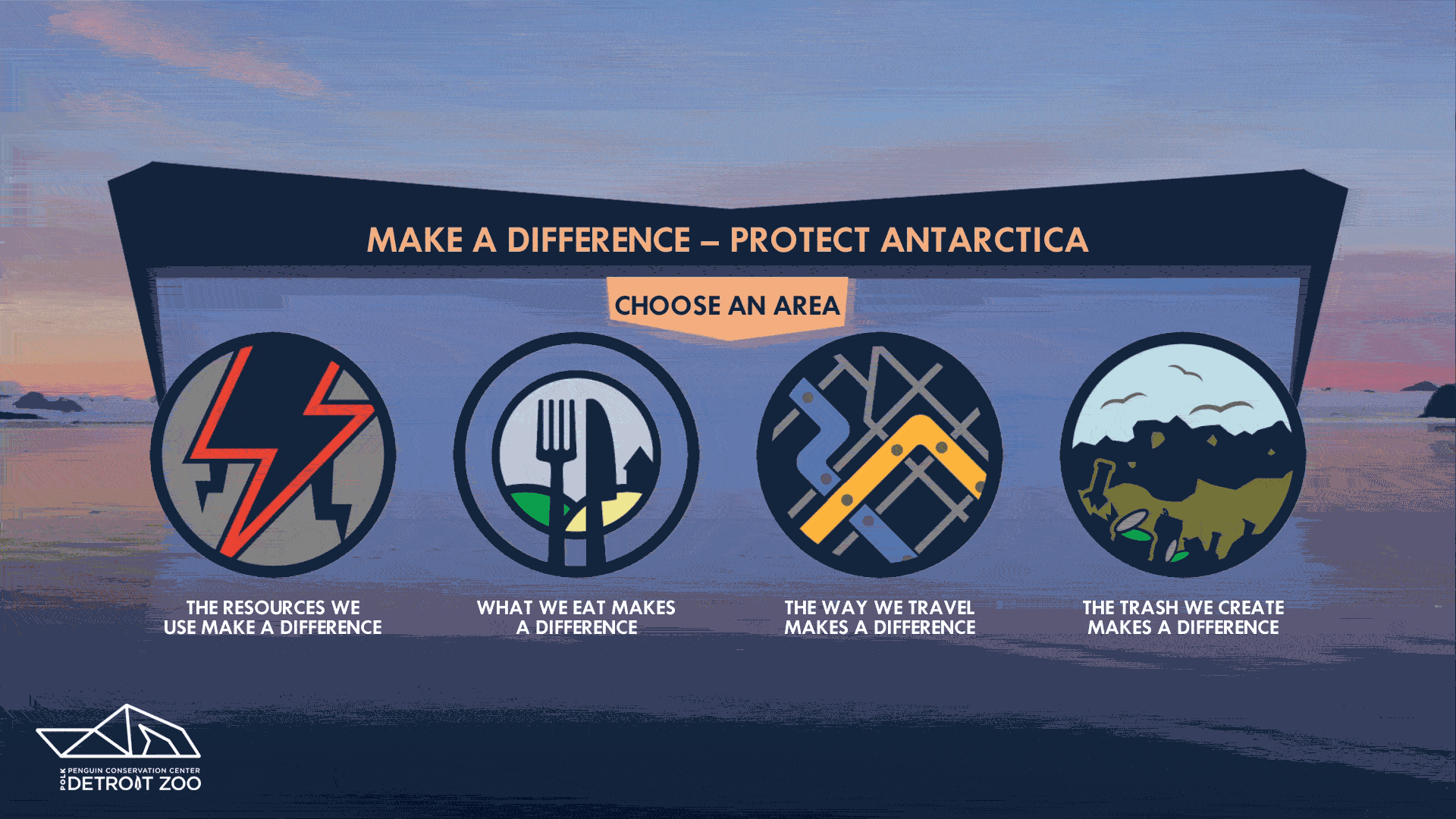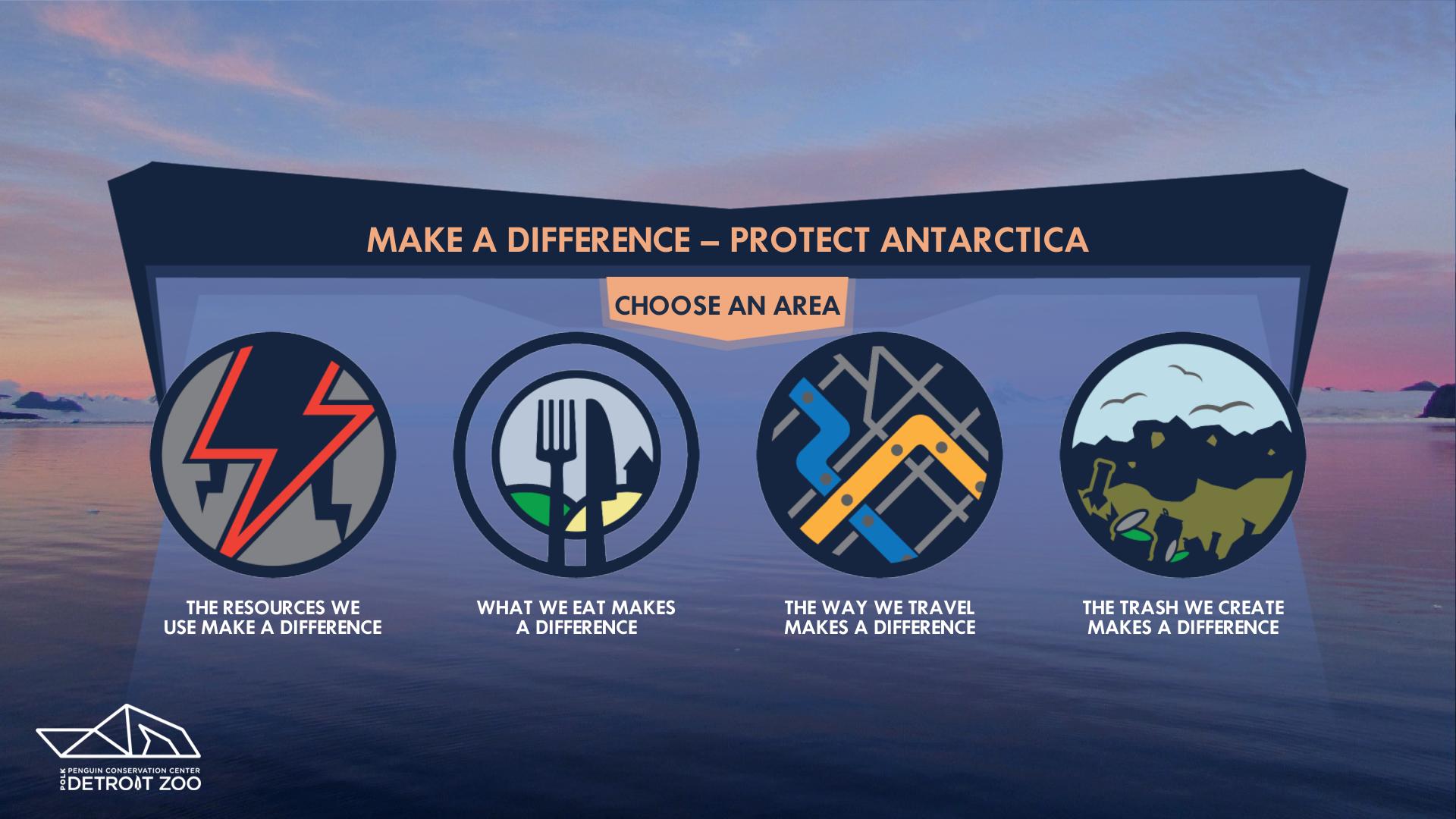Detroit Zoo: Postcard Pledge
Pledge to improve yourself and the environment
Detroit Zoo
Objectives:
- Highlight an issue: we can all help the environment
- Sense of community: you are not alone
These objectives split the interactive into two separate applications: Pledge and Display.
Pledge – Highlighting the Issue
The user can select from 4 main categories: resources, food, travel, and trash.

Each category contains 4 subcategories. For example, travel contains: carpooling, community bike paths, avoiding car idling, and vehicle emissions. Each subcategory comes with a description, giving the user more information about how to act on their pledge.
After the user has selected a category and a subcategory, they begin to create their postcard:
- Add your name
- Choose a background (select from various pictures of Antarctica)
- Take a picture of yourself (using a webcam)
- Email it (enter your email)
We then send the personalized postcard to the appropriate email address. This literally gives the user something to take home with them, a gentle reminder of their pledge to help the environment. We send the key aspects of their pledge (name, category, and subcategory) over to the display applcation.
Display – Sense of Community
Here’s an example of what would be shown if I pledged to “Use Renewable Energy Sources”.

I was tasked with making the two applications communicate. The client, Boston Productions, provided roughly the following objectives:
- See what others’ have pledged
- Reset data on a regular or user controlled basis
- Communicate with numerous Pledge stations
The first two objectives are part of the same solution: store information in a file on the computer. Just keep a tally for each type of pledge. If they want to reset it, all they need to do is set the count to 0 in the file. All other information is discarded.
That third objective mandates some form of local communication. After a bit of experimenting with C#’s Sockets, I learned of Unity’s NetworkDiscovery. The description of which is:
… allows Unity games to find each other on a local network. It can broadcast presence and listen for broadcasts …
NetworkDiscovery turned out to be a great fit. The end result is a very simple client-server model. The Display application broadcasts regularly so that any number of Pledge applications can find it. Once a connection is established, the process is fairly straightforward. Pledge applications will send information about which pledges have been completed, and the Display will keep count and show a visual for each pledge.